Explore Hakone - Japan Travel, Asia
Hakone, nestled in the heart of Japan, is a treasure trove of scenic beauty and cultural heritage. Just a short journey from Tokyo, this charming town offers breathtaking views of Mount Fuji, tranquil lakes, and a rich tapestry of history. Hakone, well-known for its serene hot springs and verdant surroundings, is the ideal vacation spot for anyone looking for both peace and activity. Whether you're an art lover, a history enthusiast, or simply looking to unwind, Hakone has something for everyone.
Ready to dive deeper into Japan's wonders? Discover our premium Japan tours here for an extraordinary experience.
Population: Approximately 11,000 in 2021.
Economy: Center of tourism industry and well-known for its onsen hot spring resorts and the breathtaking scene from Mount Fuji.
Landmarks: Famous for the view of Mount Fuji from Lake Ashi, Hakone Shrine, and Hakone Kowakien Yunessun.
Japan
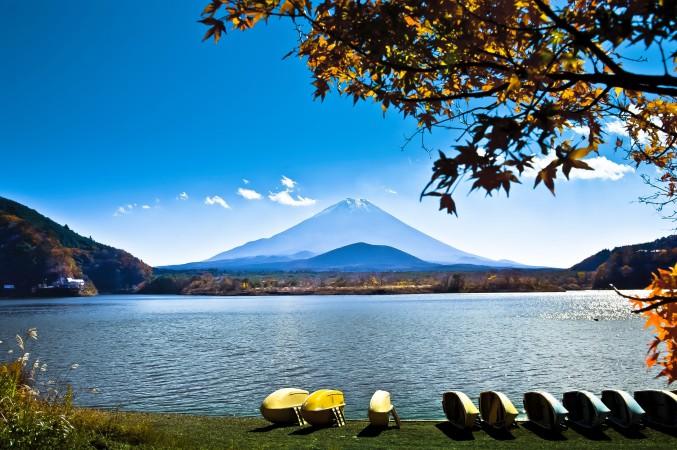
Overview of Hakone
History & Cultural Influence
Hakone's history stretches back centuries, serving as a vital checkpoint during the Edo period. It was once a bustling hub for travelers on the Tokaido road, connecting Kyoto and Edo (now Tokyo). This rich past is still evident today, with well-preserved historical sites and cultural landmarks. The Hakone Checkpoint, for instance, offers a glimpse into the town's role in Japanese history. Additionally, the influence of samurai culture can be seen in local festivals and traditional crafts. Visiting Hakone is like stepping back in time, where you can experience the essence of Japan's heritage.
Interaction with The Locals
Hakone is a small town in Japan's Kanagawa Prefecture, with a population of approximately 11,000 residents. The citizens of Hakone are known for their warm hospitality and deep connection to the area's rich cultural heritage. They play a crucial role in preserving the local traditions and welcoming visitors to explore the land’s natural beauty and historical sites.
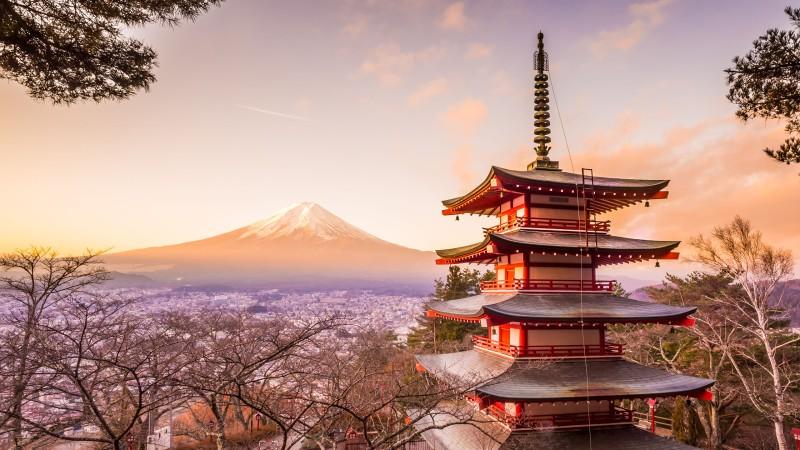
The beauty of Hakone - © f11photo
Top Attractions in Hakone
Hakone offers a diverse range of attractions that cater to various interests, from natural beauty to cultural landmarks. Here's a list of the must-visit places in this scenic region:
- Mount Fuji: Enjoy breathtaking views of Japan's iconic Mount Fuji from the serene waters of Lake Ashi. Boat tours and sightseeing cruises offer stunning panoramas of the mountain, especially on clear days.
- Hakone Shrine: Located on the shores of Lake Ashi, this beautiful Shinto shrine is known for its iconic red torii gate, which appears to float on the water. The shrine is a peaceful place to explore and offers a spiritual experience amidst nature.
- Owakudani Geothermal Valley: Known for its volcanic activity, Owakudani is famous for its hot springs and sulfur vents. Visitors can experience the geothermal activity up close and try the local specialty, Kuro-tamago (black eggs), which are boiled in the sulfuric hot springs.
- Gora Park: A beautiful Western-style landscape park located in the Gora area, known for its seasonal flowers, traditional Japanese tea house, and craft workshops. It's a perfect spot for a leisurely stroll and enjoying the natural beauty of Hakone.
- Hakone Kowakien Yunessun: A unique hot spring theme park offering a variety of baths, including wine, coffee, and green tea baths. It's a fun and relaxing experience for visitors of all ages, combining traditional onsen culture with modern twists.
- Chisuji Falls: A serene and picturesque waterfall located near the Hakone Open-Air Museum. The falls are known for their delicate streams of water cascading over a moss-covered rock face, creating a peaceful and scenic spot for visitors.

Hakone Shrine - © Kanagawa
Must-Try Dishes in Hakone
Hakone's cuisine is as diverse as its landscape, offering a range of traditional Japanese dishes that delight the taste buds. Here are some local dishes in Hakone you must try at least one during your visit.
- Kuro-Tamago (Black Eggs): A local delicacy boiled in the sulfuric hot springs of Owakudani, Kuro-tamago is famed for its blackened shells and unique flavor. According to legend, eating these eggs may extend your life by seven years.
- Soba Noodles: These buckwheat noodles are a staple in Japanese cuisine. In Hakone, they are often served chilled with a dipping sauce or in a warm broth, accompanied by fresh vegetables and sometimes tempura.
- Tofu Dishes: Hakone is known for its high-quality tofu, often enjoyed in a variety of forms, from silky tofu soups to grilled or fried tofu. These dishes highlight the region's commitment to traditional Japanese ingredients and flavors.
- Kaiseki Cuisine: This multi-course Japanese meal offers a seasonal and artfully arranged selection of dishes. In Hakone, you can experience kaiseki at many upscale ryokan (traditional inns), where the meal showcases local ingredients and culinary techniques.
- Tempura: Tempura, or lightly battered and deep-fried fish and vegetables, is a favorite dish at Hakone's eateries. It is a tasty delight with a crispy outside and a soft interior that is typically served with rice and dipping sauce.
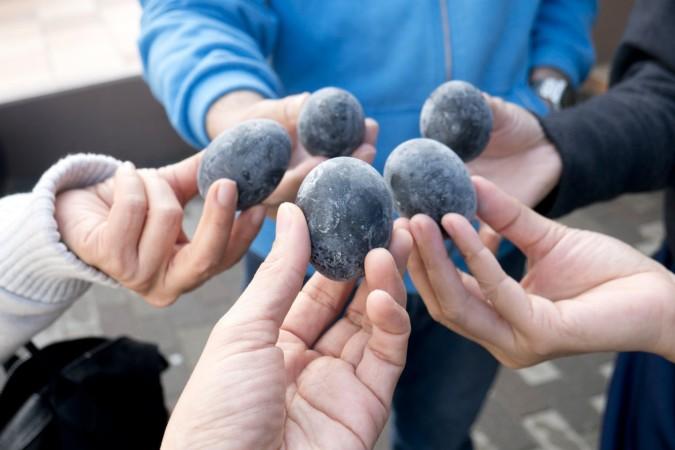
Hakone Kuro-Tamago - © Japan Tourism
Festivals & Local Celebrations
Visitors may enjoy unique experiences during Hakone's festivals and local festivities, which are colorful exhibitions of the region's cultural legacy and seasonal beauty. Here’s a closer look at some of the most significant events and celebrations in Hakone:
Hakone Daimyo Gyoretsu (Feudal Lord's Procession)
- Overview: Held annually in October, the Hakone Daimyo Gyoretsu is a historical reenactment of the grand procession that feudal lords undertook when visiting Hakone during the Edo period. This festival provides a captivating glimpse into Japan’s feudal history.
- Highlights: Participants dress in elaborate period costumes, including samurai and courtiers, and parade through Hakone’s streets. The event features traditional music, performances, and an authentic display of historical pageantry. The historic ambiance and vivid colors are sure to delight spectators as the parade makes its way through the town.
Hakone Gora Summer Festival
- Overview: The Hakone Gora Summer Festival takes place in August, celebrating summer with lively activities and community spirit. It’s a highlight of Hakone’s summer season and draws both locals and tourists.
- Highlights: The festival includes traditional dance performances, including the Awa Odori, a lively and energetic dance that invites everyone to join in. The evening culminates in a spectacular fireworks display over the Gora area, providing a stunning visual treat against the night sky. The festival atmosphere is enhanced by food stalls and games, creating a festive environment.
Want to know about Matsumoto? Check out our insights here and see why it's worth a visit.
Cherry Blossom Festivals
- Overview: In spring, Hakone transforms into a picturesque wonderland with cherry blossoms (sakura) in full bloom. The cherry blossom season is celebrated with various festivals and events.
- Highlights: Key spots for cherry blossom viewing include Hakone Gora Park and the shores of Lake Ashi. The festivals feature outdoor picnics, traditional Japanese music, and cultural performances. Visitors can enjoy hanami (flower viewing) parties under the blooming cherry trees, a quintessential Japanese experience.
Autumn Leaves Viewing
- Overview: Hakone’s autumn foliage is renowned for its stunning display of colors, attracting visitors from all over Japan and beyond. The autumn leaves viewing season typically occurs from late October to early December.
- Highlights: Popular spots for viewing include the Hakone Botanical Garden of Wetlands and the area around Lake Ashi. The season is marked by special events such as evening illuminations where the autumn leaves are beautifully lit, creating a magical atmosphere. Many local ryokan and hotels offer special autumn-themed meals and packages to complement the foliage viewing experience.
Hakone Art Festival
- Overview: Regularly conducted throughout the year, the Hakone Art Festival is a celebration of both local and international art. It features a wide variety of forms of art, including performances and visual arts.
- Highlights: The festival includes exhibitions, workshops, and performances held at various venues, including the Hakone Open-Air Museum. Visitors can explore contemporary art installations, participate in art workshops, and enjoy live performances that reflect the town’s cultural vibrancy.
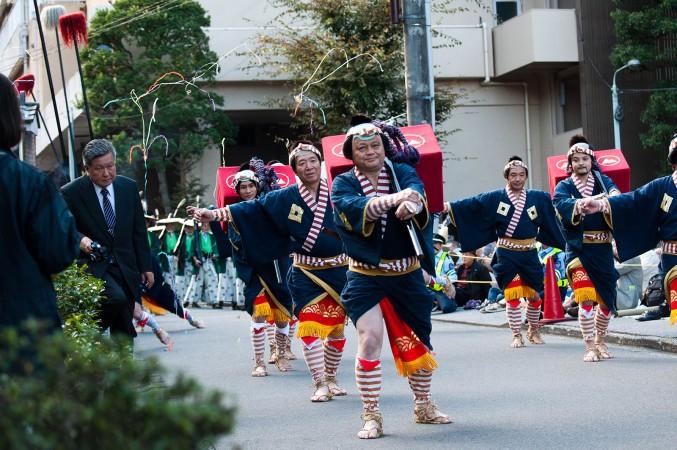
Hakone Daimyo Gyoretsu - © Japan Tourism
What to Do in Hakone
Hakone offers a wide range of activities for tourists, whether you're seeking relaxation, adventure, or cultural exploration:
- Lake Ashi Cruises: Enjoy a scenic boat ride on Lake Ashi, where you can take in views of Mount Fuji and the surrounding natural beauty. The tranquil waters and picturesque landscapes make for a memorable experience.
- Hiking Trails and Nature Walks: Explore Hakone's numerous hiking trails, which vary in difficulty and length. Popular routes include the Hakone Nature Trail and the Old Tokaido Road, offering stunning views and immersion in the region's natural beauty.
- Onsen (Hot Spring) Experiences: Hakone is famous for many beautiful and tranquil onsen (or hot springs) around the region. Relax in traditional bathhouses or luxurious ryokan with private onsen, and enjoy the therapeutic benefits of mineral-rich waters.
- Visiting Art and History Museums: Delve into Hakone's cultural scene by visiting museums like the Hakone Open-Air Museum and the PolA Museum of Art. These institutions showcase a blend of contemporary and classical art, set amidst beautiful surroundings.
- Exploring Historical Sites: Discover Hakone's historical landmarks, such as the Hakone Checkpoint, which offers insights into the region's role during the Edo period. These sites provide a fascinating look into Japan's past.
Curious about Obuse? Learn more about what makes this spot so special in our detailed article.
Shopping in Hakone
Hakone's shopping scene combines traditional crafts with unique souvenirs, offering a variety of options for visitors.
- Hakone-Yumoto Shopping Street: A lively area near the station, perfect for souvenirs, local snacks, and traditional crafts. Enjoy browsing through unique shops and sampling regional treats.
- Gora Park Souvenir Shops: Located within Gora Park, these shops offer local products and gifts in a scenic setting. Ideal for finding handmade crafts and traditional goods.
- Hakone Craft House: Specializes in traditional Japanese arts and crafts, including pottery and textiles. A great spot for high-quality, handcrafted items.
- Odawara Castle Shopping Area: Near Odawara Castle, this area features local goods and souvenirs amidst historic surroundings. Explore unique items while enjoying the castle’s charm.
- Hakone Kowakien Yunessun Shops: Located at the Yunessun hot springs resort, these shops offer bath products, relaxation-themed gifts, and local delicacies.
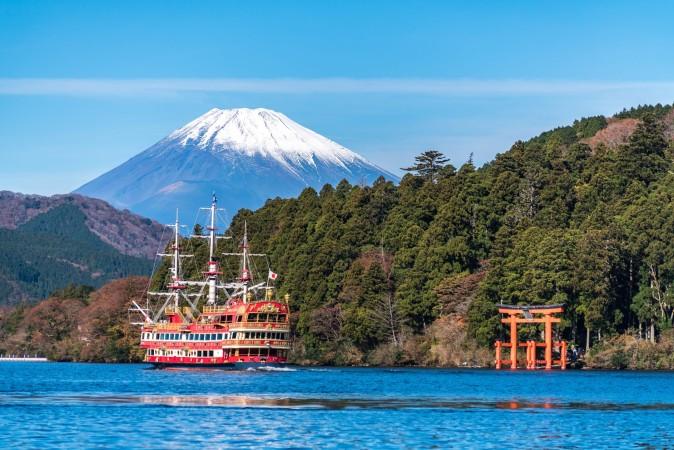
Lake Ashi Cruises - © Japan Tourism
Weather in Hakone: Best Time to Visit
Hakone’s weather offers distinct seasonal experiences that cater to different tourist interests throughout the year. Here's a brief overview of the weather conditions throughout the year.
Spring in Hakone
Spring is a favorite time for tourists, as the weather is mild and the cherry blossoms are in full bloom. With temperatures ranging from 10°C to 20°C (50°F to 68°F), it’s perfect for enjoying outdoor activities, sightseeing, and participating in hanami (flower viewing) parties. The vibrant blossoms at spots like Hakone Gora Park draw many visitors looking to capture the beauty of the season.
Summer in Hakone
Summer brings warmer temperatures, ranging from 20°C to 30°C (68°F to 86°F), and a lively atmosphere with festivals and fireworks. Although the weather can be hot and humid, it's an excellent time to enjoy Hakone’s hot springs and participate in local summer festivals. The Gora Summer Festival and other seasonal events attract visitors looking to experience traditional dances and enjoy the lively summer vibe.
Autumn in Hakone
Autumn is a prime season for tourists due to the stunning fall foliage and cooler temperatures between 10°C and 20°C (50°F to 68°F). The colorful autumn leaves provide breathtaking scenery, ideal for hiking and photography. Visitors flock to Hakone to witness the brilliant autumn colors and participate in seasonal events such as evening illuminations that highlight the natural beauty of the area.
Winter in Hakone
Hakone's winter months are marked by lower temperatures, which often range from 0°C to 10°C (32°F to 50°F). Even when the temperature drops occasionally, the beautiful winter scenery is enhanced by the fresh air and snowflakes. This season is perfect for enjoying hot spring baths and cozying up in traditional inns. The serene winter landscape, combined with fewer crowds, offers a peaceful retreat and an opportunity to experience Japanese New Year traditions at local temples and shrines.
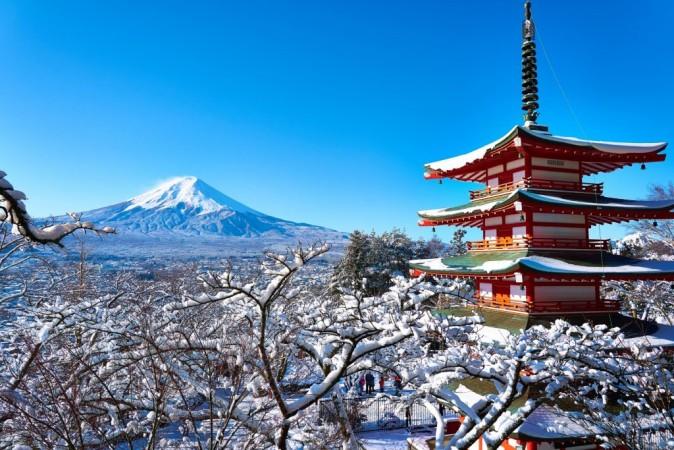
Winter in Hakone - © Vietjet Air
Cultural Etiquette in Hakone
Understanding and respecting local cultural etiquette enhances your experience in Hakone and ensures positive interactions with residents:
- Respectful Behavior: Courtesies and decency are highly prized in Japanese society. Greet others with a bow and use polite language. Remove your shoes before entering homes or traditional accommodations.
- Quiet and Considerate: Maintain a low volume in public places and be mindful of your surroundings. Loud conversations or disruptive behavior can be seen as impolite.
- Onsen Culture: When using onsen (hot springs), make sure to thoroughly wash and rinse your body before entering the communal baths. Avoid bringing towels into the onsen water and keep noise to a minimum.
- Dining Etiquette: Use chopsticks correctly and avoid sticking them upright in rice, as this resembles a funeral practice. It’s also customary to say "Itadakimasu" before starting your meal and "Gochisosama" after finishing.
Essential Travel Information
Getting Around Hakone
Navigating Hakone is straightforward with a range of transportation options to suit various preferences. You can enjoy scenic train rides through the mountainous terrain, complemented by buses that connect to more remote areas and key sites. For breathtaking views, aerial cable cars offer an enjoyable way to see the landscape from above. Taxis are available for convenient, flexible travel, though they can be pricey, while car rentals provide the freedom to explore at your own pace, though parking can be challenging in busy areas. Additionally, renting a bicycle or walking along the picturesque paths and trails offers a more intimate experience of Hakone’s natural beauty, with many attractions easily accessible on foot.
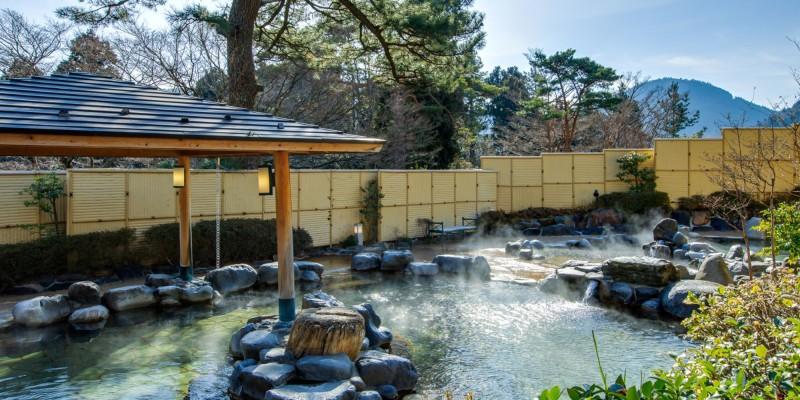
Experience Hakone onsen culture - © Hakone Kowakien Mikawaya Ryokan Official
ATM & Banking Services
Managing finances in Hakone is convenient with various banking services at your disposal. ATMs are plentiful, located in major areas like train stations, convenience stores, and banks, and many accept international credit and debit cards for easy cash withdrawals. Currency exchange services are available at major hotels and some travel agencies, so it’s wise to exchange a small amount of money beforehand to cover immediate expenses. Most restaurants, shops, and hotels accept credit and debit cards, though carrying some cash is advisable for smaller establishments and rural areas.
Where to Stay in Hakone
Hakone offers a diverse array of accommodation options to suit different preferences and budgets. For a luxurious experience, traditional Japanese inns and upscale resorts provide private hot springs, elegant rooms, and gourmet meals, ensuring a pampered and authentic stay. Those seeking more affordable choices can find budget hotels and guesthouses that offer comfort and convenience near major attractions. Unique lodging options, such as hot spring inns and mountain lodges with breathtaking views, offer memorable and immersive experiences. Additionally, hostels and vacation rentals provide a more casual and cost-effective alternative, creating a home-like atmosphere ideal for a relaxed stay.
Articles for you
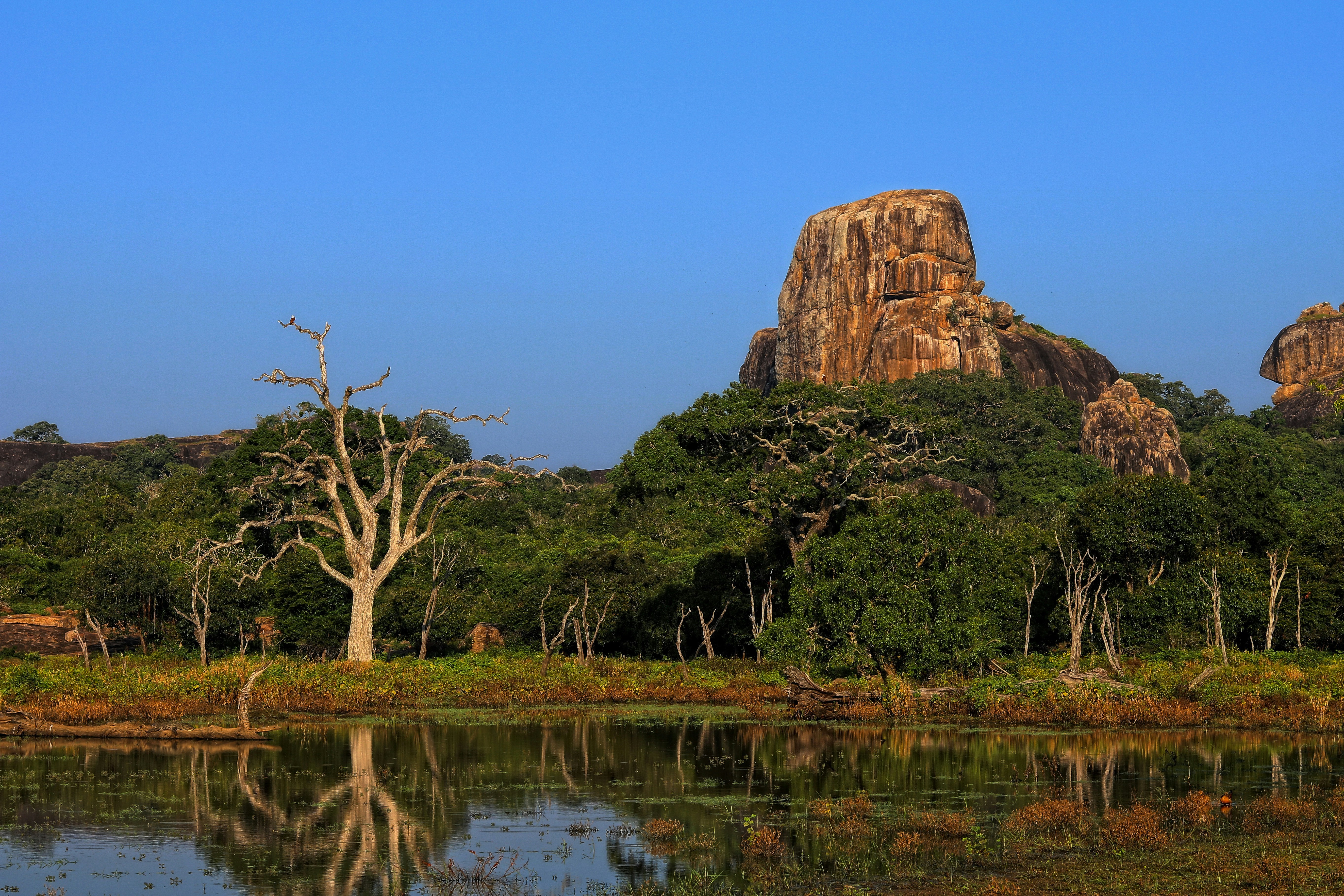
Explore Yala National Park - Sri Lanka Travel, Asia
Tucked away in Sri Lanka’s southeastern corner, Yala National Park is where wild nature meets deep tradition. Known worldwide for its leopard population, the park is also home to elephants, sloth bears, crocodiles, and hundreds of bird species. Beyond wildlife, Yala opens doors to a cultural landscape dotted with ancient temples, Buddhist ruins, and coastal villages. For travelers seeking more than just a safari, Yala offers a chance to explore eco-tourism, local communities, and sacred heritage sites.
Population: The Yala National Park area doesn’t have a human population.
Economy: The economy around Yala National Park thrives on a blend of eco-tourism, agriculture, and local services. Safari tours, eco-lodges, and cultural experiences drive steady income for nearby towns like Tissamaharama and Kataragama, supporting thousands of families.
Landmarks: Famous for Block I of Yala and wildlife encounters, including elephants, sloth bears, crocodiles, and exotic bird species.
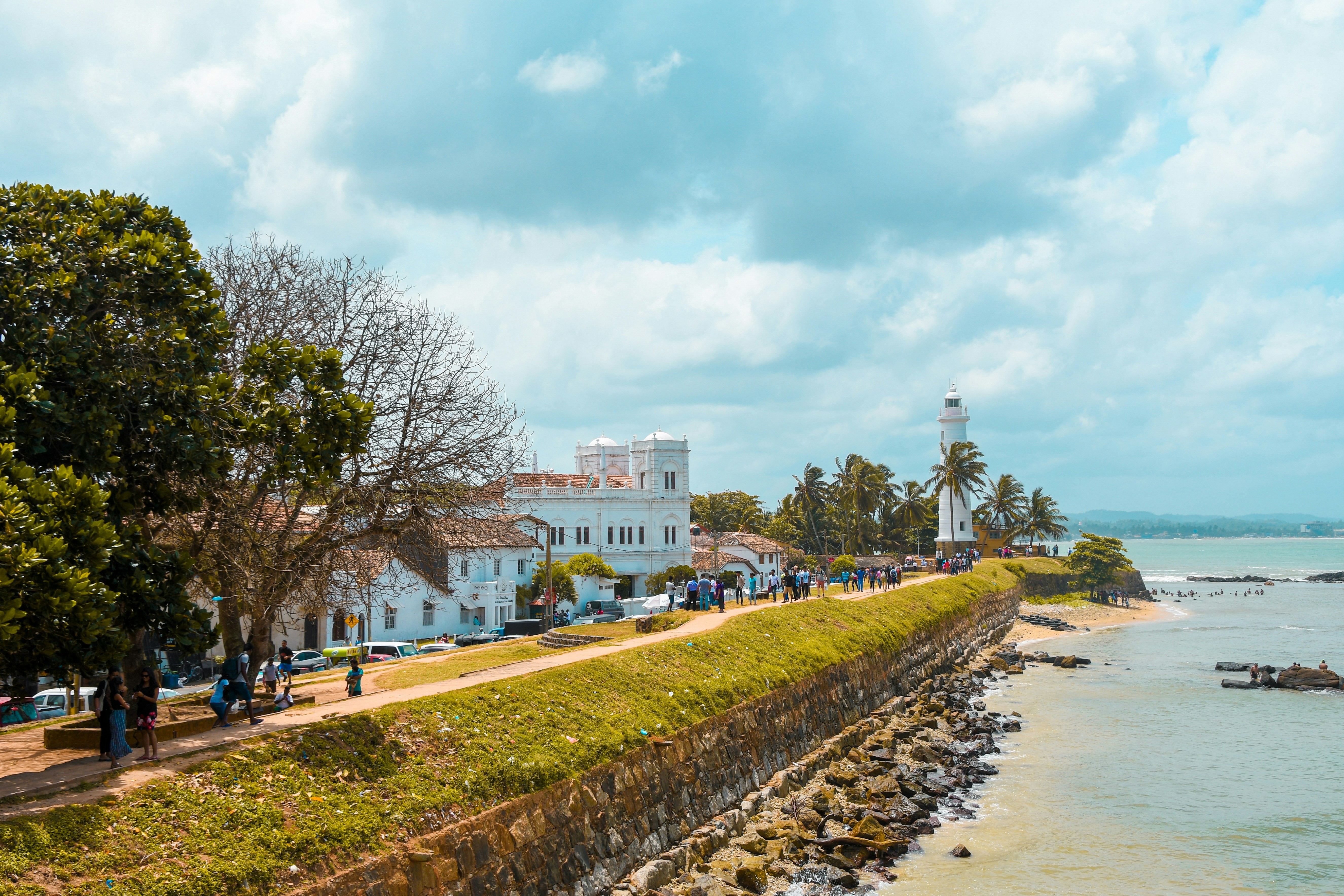
Explore Galle - Sri Lanka Travel, Asia
Nestled on Sri Lanka’s southern coastline, Galle is a vibrant city where history meets the sea. Its cobbled streets, colonial architecture, and serene beaches make it a must-visit destination for travelers seeking a blend of culture, adventure, and relaxation. A UNESCO World Heritage site, Galle captivates visitors with its Dutch Fort, bustling markets, and friendly locals. Whether you’re exploring the ramparts at sunset or savoring fresh seafood by the shore, Galle promises an unforgettable journey into Sri Lanka’s heritage.
Population: Approximately 113,000 in 2023.
Economy: Galle’s economy thrives on tourism, trade, and fisheries. The city’s historic fort, colonial architecture, and coastal charm draw thousands of international visitors each year, making tourism its main economic driver. Fishing remains vital for local livelihoods, supplying fresh seafood across the region.
Landmarks: Famous for the Galle Fort, Dutch Reformed Church & Maritime Museum, and Unawatuna Beach.
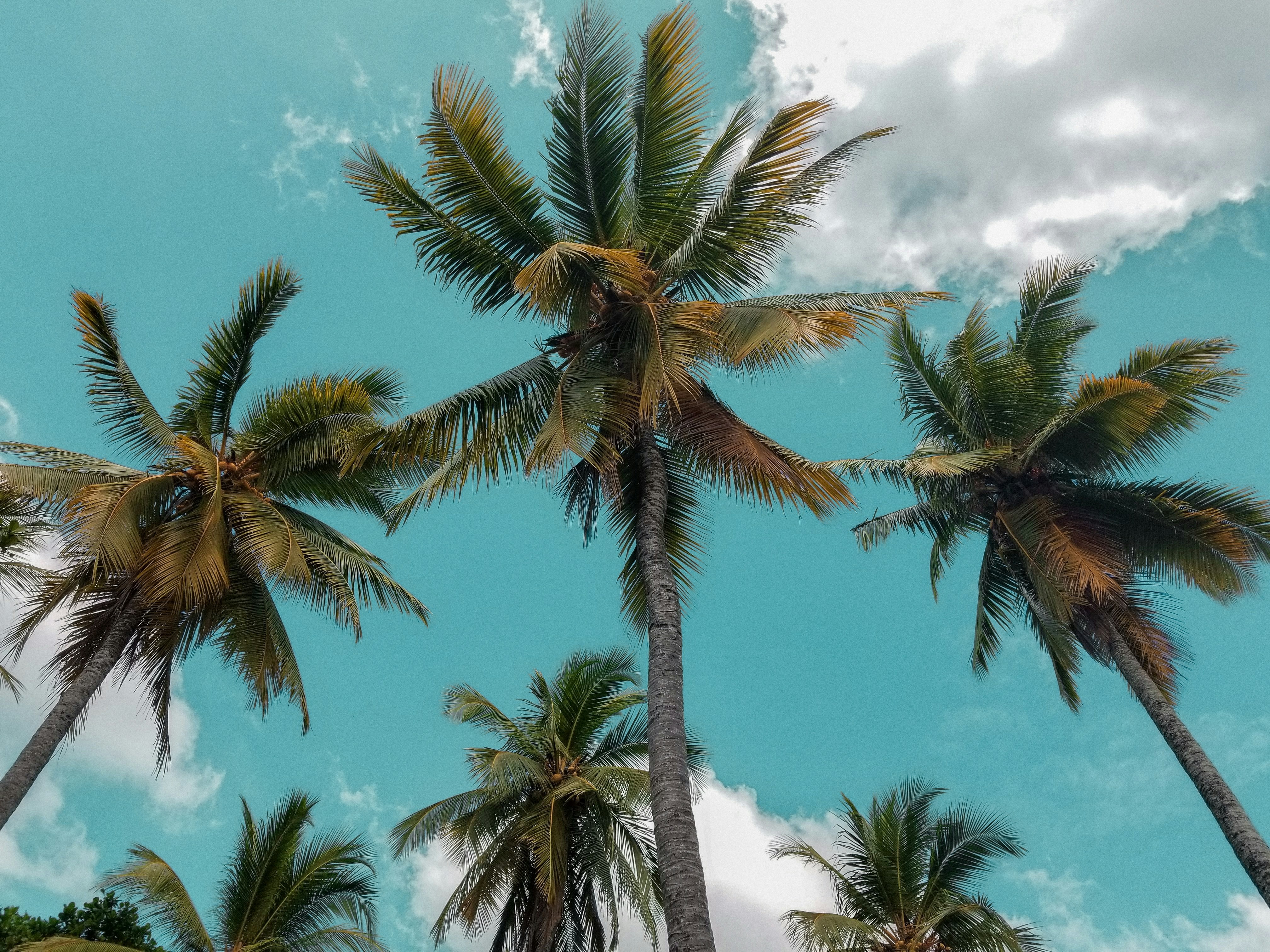
Explore Bentota - Sri Lanka Travel, Asia
Nestled along Sri Lanka’s southwestern coast, Bentota is a tropical paradise that blends golden beaches, vibrant culture, and thrilling adventures. Famous for its calm waters, luxury resorts, and scenic river estuary, Bentota has become a top destination for travelers seeking both relaxation and authentic experiences. From serene beach walks at sunrise to adrenaline-pumping water sports, this coastal town offers a perfect balance of leisure and exploration. With its proximity to Colombo and Galle, Bentota is easy to reach, making it an ideal stop for both short escapes and extended holidays.
Population: Approximately 37,000 in 2023.
Economy: Bentota’s economy thrives mainly on tourism, which drives local businesses such as hotels, restaurants, and wellness retreats. The town also benefits from fishing, coconut cultivation, and handicrafts like wood carving and batik textiles. Many residents rely on the growing demand for water sports and Ayurvedic treatments, making tourism the backbone of both income and employment in the area.
Landmarks: Famous for Bentota Beach, Bentota River Safari, and Kande Vihara Temple.
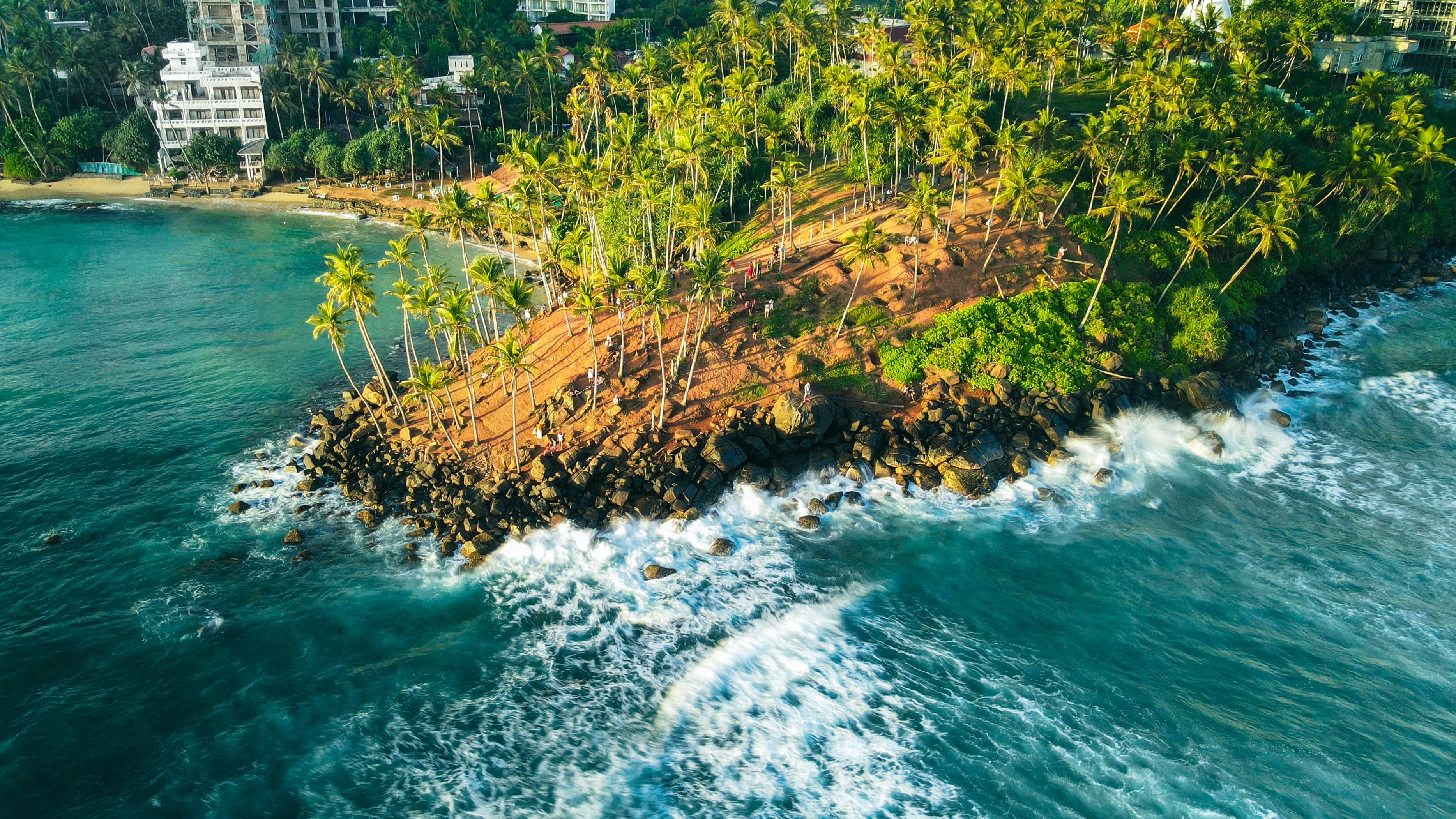
Explore Mirissa - Sri Lanka Travel, Asia
Mirissa is a charming coastal town on Sri Lanka’s southern shoreline. Known for its golden beaches, turquoise waters, and vibrant marine life, it has become a must-visit stop for travelers exploring the island. Many come for whale watching, surfing, and sunset views at Coconut Tree Hill, but Mirissa offers much more than postcard beauty. The fishing boats you see anchored by the bay carry generations of stories. Local traditions, delicious cuisine, and a laid-back rhythm of life shape every visitor’s experience.
Population: Approximately 4,700 in 2023.
Economy: Mirissa’s economy is largely shaped by its coastal location. Fishing has long been the backbone of local livelihoods, with generations relying on the Indian Ocean for income. In recent decades, tourism has become the main driver of growth, thanks to whale watching, surfing, and beachside hospitality.
Landmarks: Famous for Mirissa Beach, Coconut Tree Hill, and Parrot Rock Bridge.
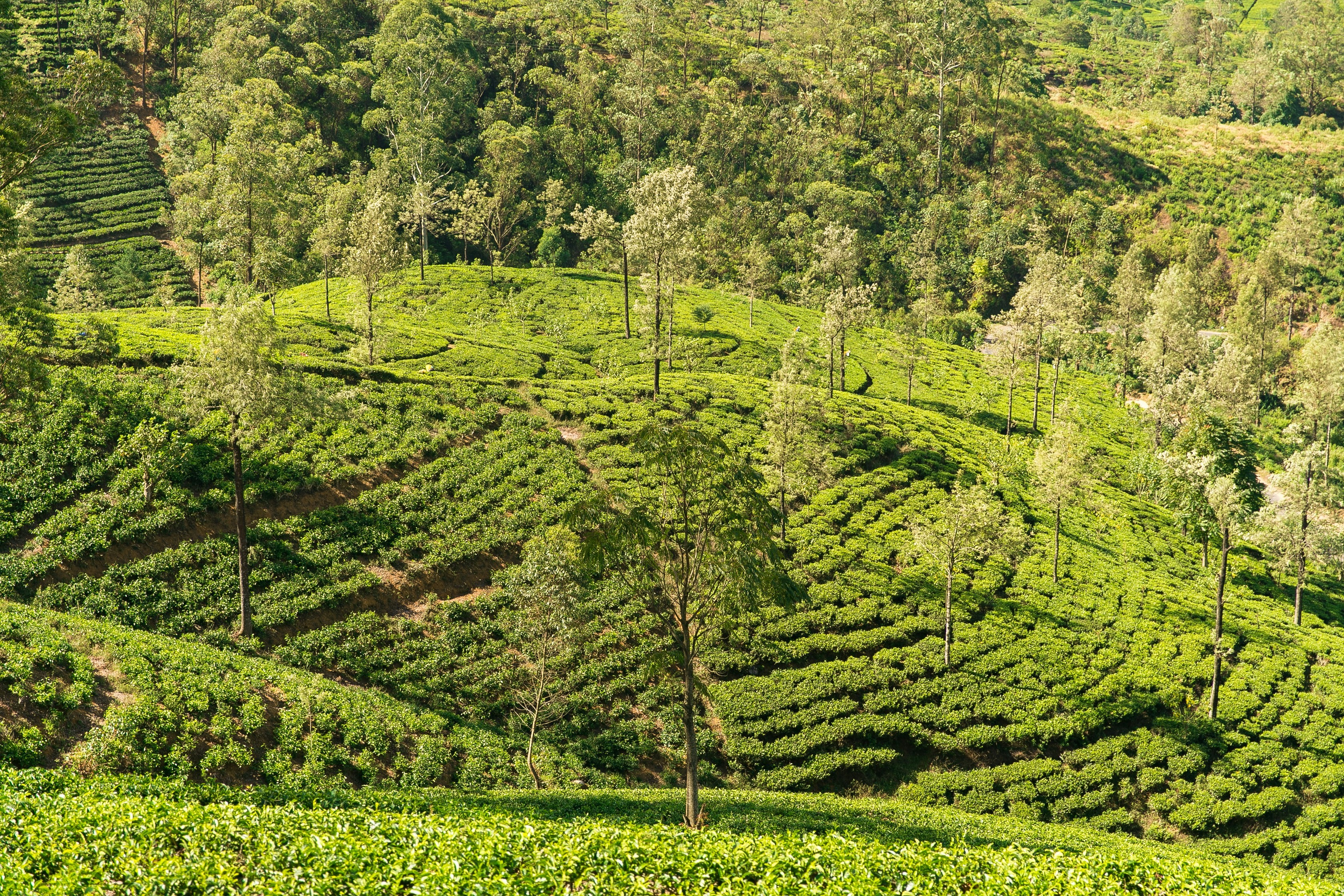
Explore Nuwara Eliya - Sri Lanka Travel, Asia
Tucked away in the Central Highlands of Sri Lanka, Nuwara Eliya is often called “Little England”. With its rolling tea plantations, cool misty mornings, and colonial charm, this mountain town feels like a step into another world. Travelers come here to breathe fresh air, walk through flower gardens, sip the finest Ceylon Tea, and enjoy a pace of life far from the island’s busy cities. Whether you’re drawn by scenic landscapes, heritage architecture, or the warmth of its people, Nuwara Eliya is a destination that blends nature, culture, and history in perfect harmony.
Population: Approximately 781,000 in 2023.
Economy: Nuwara Eliya’s economy thrives mainly on tea production, as it sits in the heart of Sri Lanka’s central highlands, famous worldwide for Ceylon Tea. The city also benefits from a growing tourism industry, attracting visitors with its colonial charm, cool climate, and scenic landscapes.
Landmarks: Famous for Gregory Lake, Hakgala Botanical Garden, and Victoria Park.
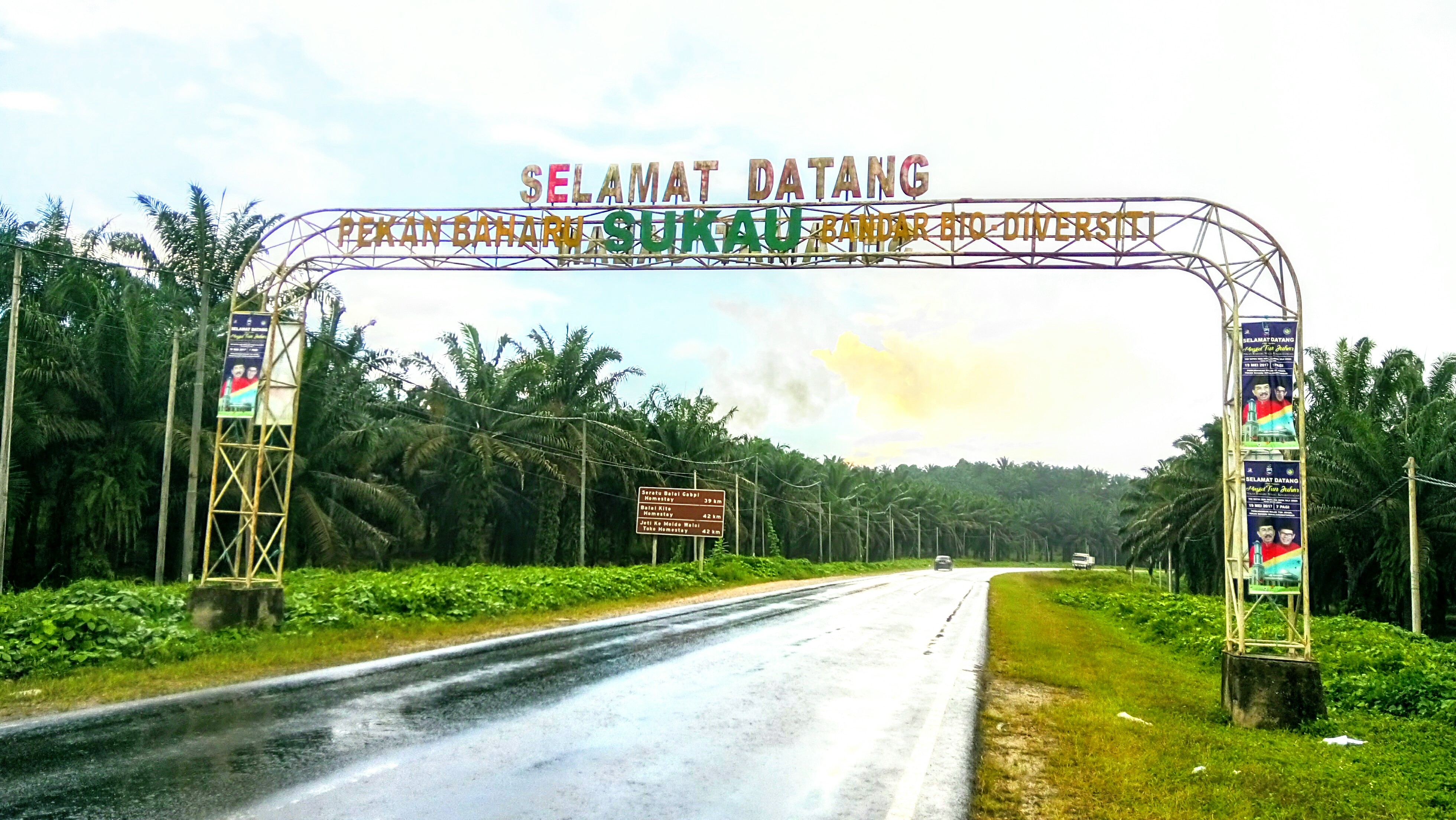
Explore Sukau - Malaysia Travel, Asia
Nestled on the banks of the Kinabatangan River in Sabah, Malaysian Borneo, Sukau is a destination where wildlife, culture, and conservation come together. Known as one of Asia’s top spots for river safaris and eco-tourism, this quiet village offers a front-row seat to encounters with Bornean orangutans, pygmy elephants, proboscis monkeys, and exotic birdlife.
Population: Approximately 1,400 in 2019.
Economy: Sukau’s economy is shaped by its riverine location and natural resources. Traditionally, the Orang Sungai community relied on fishing, small-scale farming, and forest gathering for their livelihood. Today, the village has shifted toward eco-tourism, with river cruises, jungle trekking, and homestays providing income.
Landmarks: Famous for the Kinabatangan River cruises, Gomantong Caves, and Ox-bow lakes and wetlands.
